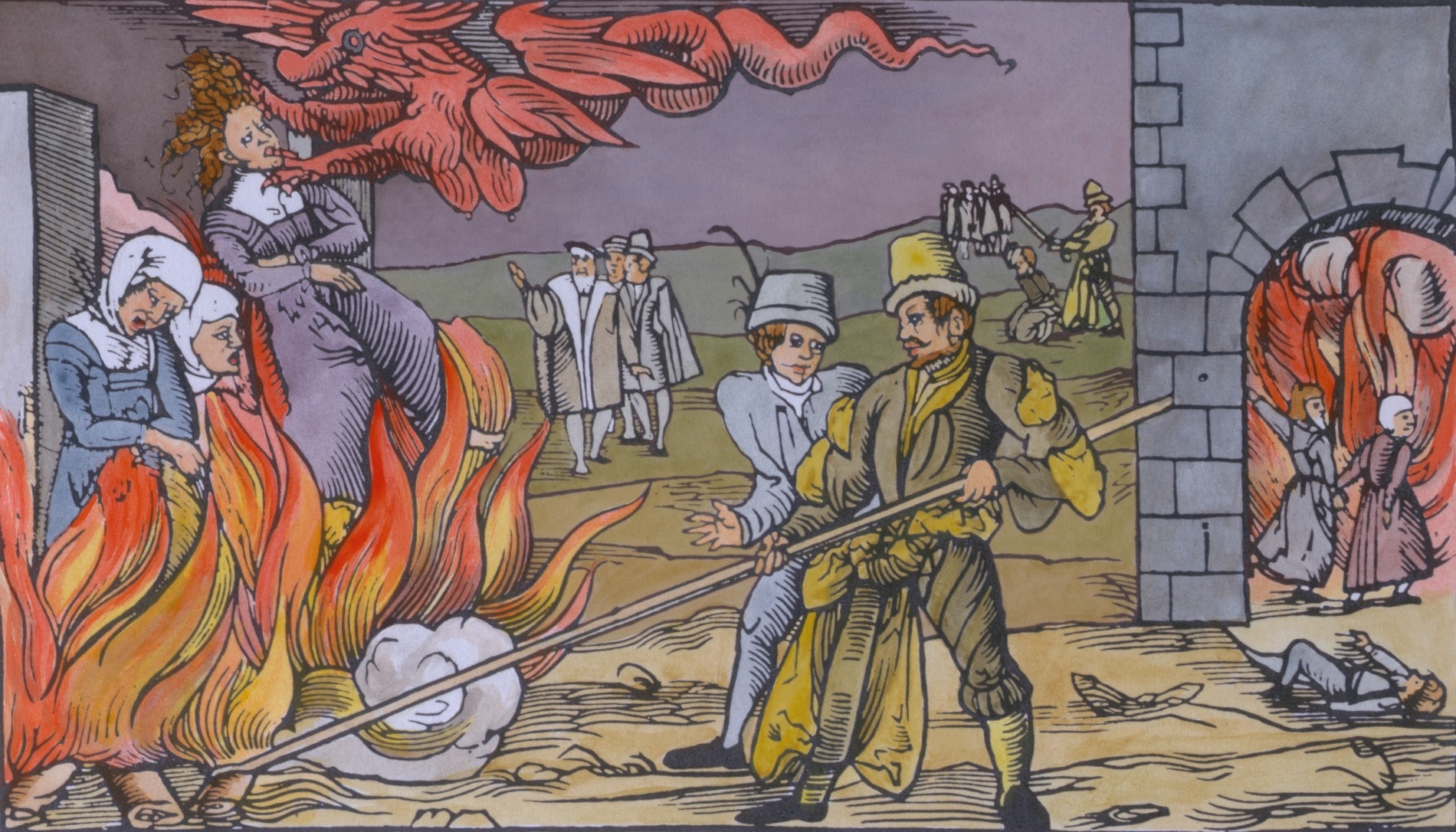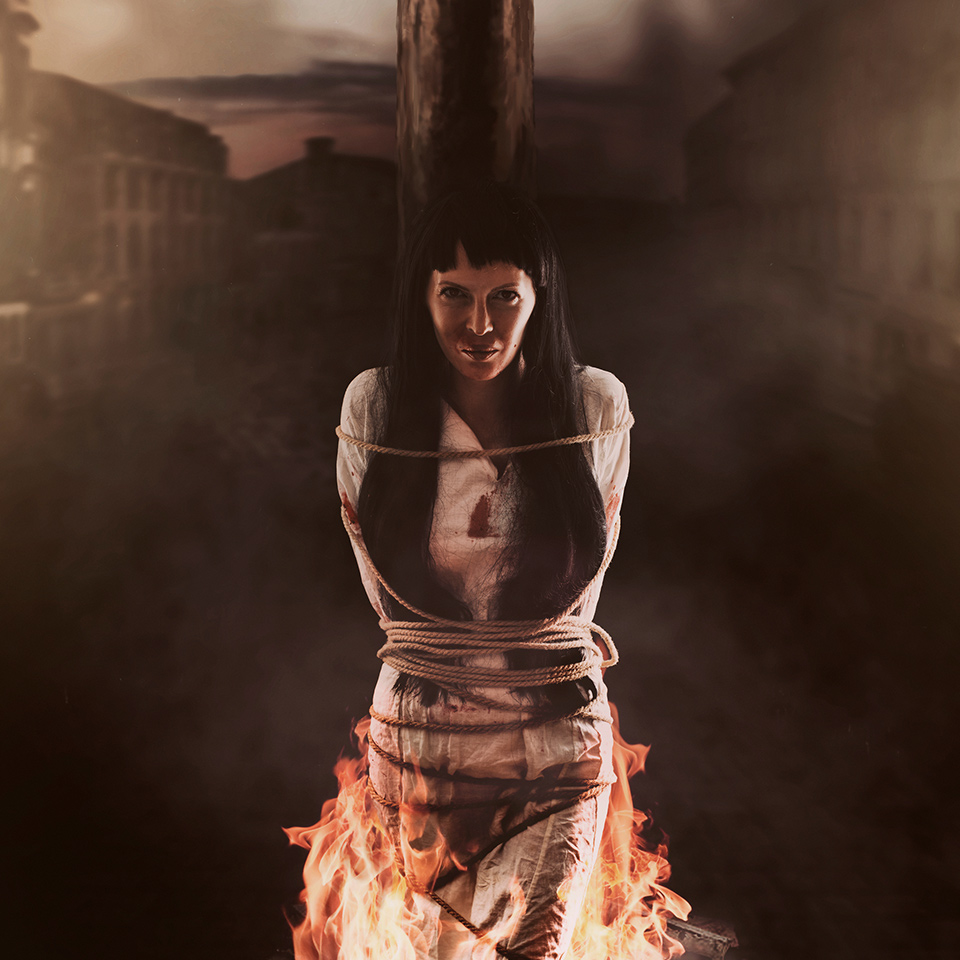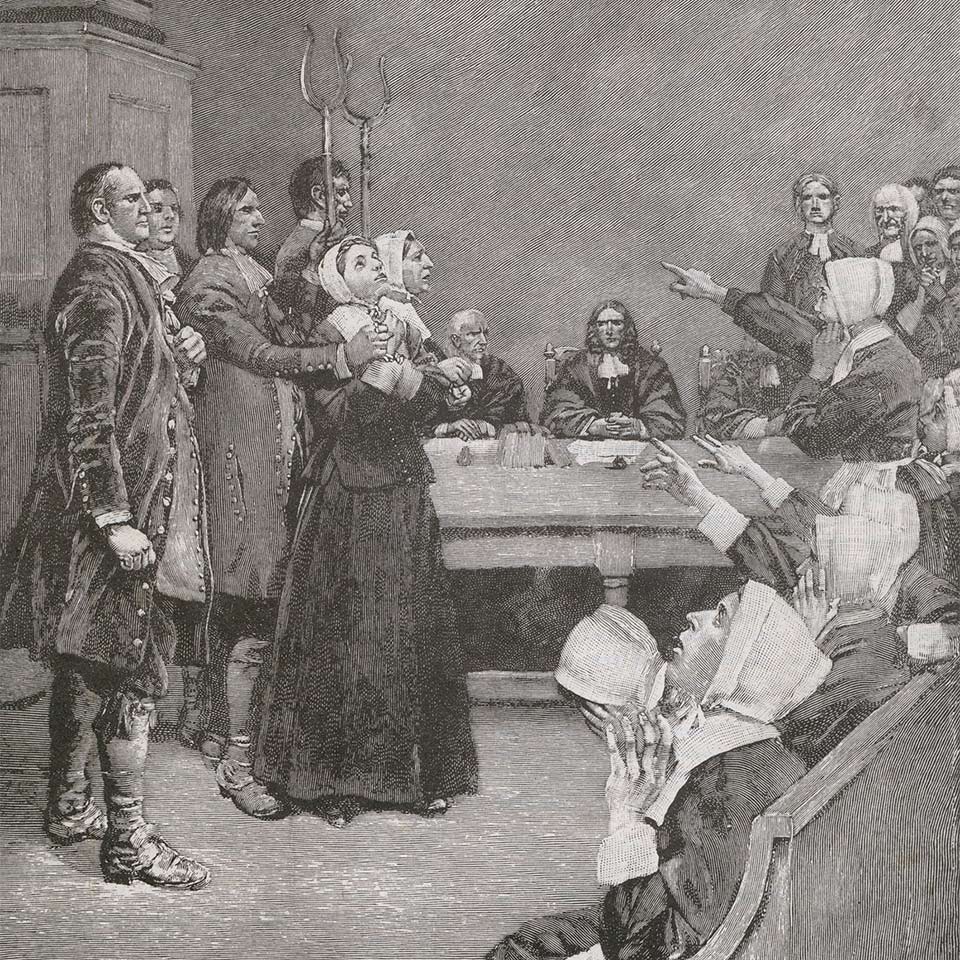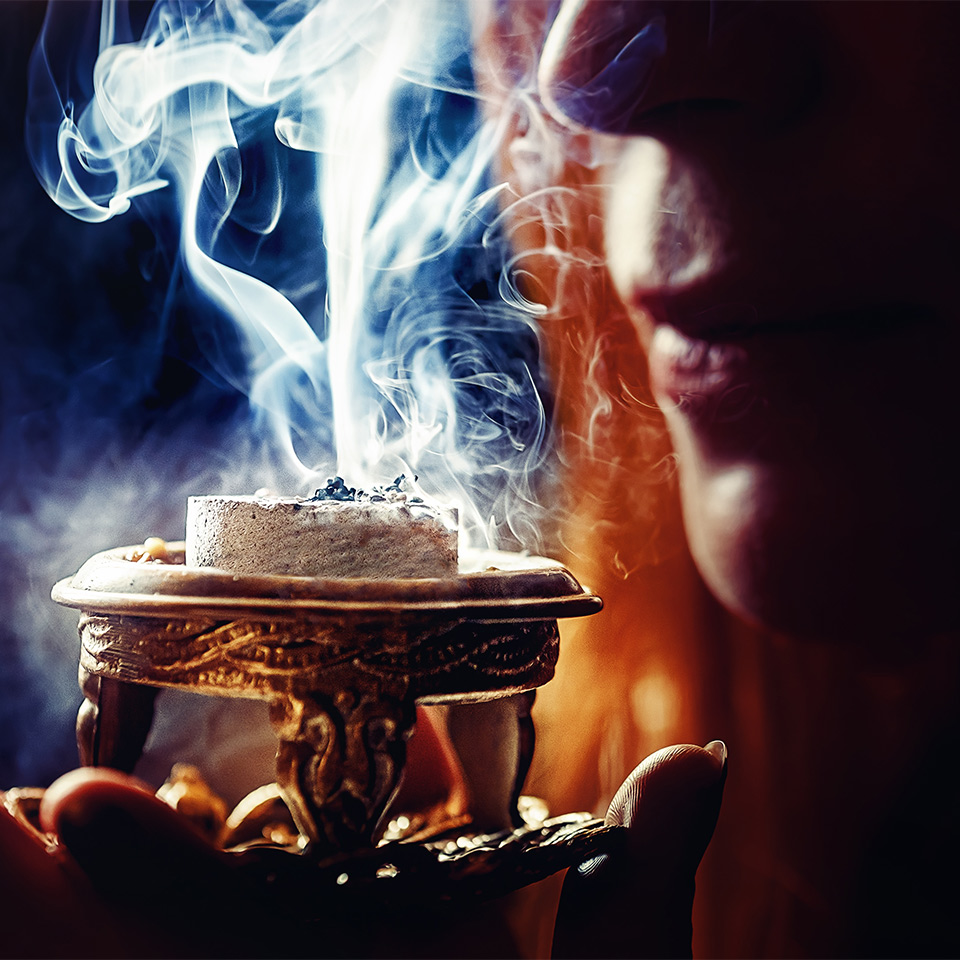Witchcraft in the UK has a long and complex history. At one point, UK witches were considered such a problem that the UK government had to implement laws and legislation to combat it. While it was deemed heresy and denounced by important figures such as Pope Innocent VIII, witchcraft was not officially made a capital offence in Britain until 1563, but this did not mean that witchcraft couldn’t wreak havoc across the nation before then.

Jump to:
From 1484 until around 1750, some 200,000 witches were tortured, burnt or hanged in Western Europe, with many of them being in England. Most supposed witches were old women, poor and unfortunate enough to have traditionally ‘ugly’ features or have acted in a way which was misconstrued at the time.
Many unfortunate women were condemned to hanging or burning at the stake on little to no evidence. Sometimes, they were tortured until they would confess to practising black magic, even though they were clearly performing no wrongdoing. The ‘pilnie-winks’, or thumb screws, and iron ‘caspie-claws’, a form of leg irons heated over a brazier, were two reliable torture methods to get a confession from a supposed witch. Witches in England have had quite a tumultuous relationship, and it is not hard to see why. Witchcraft was frequently blamed for many people’s misfortune. If the country ran into turmoil or an important public figure had an unforeseen circumstance, instead of understanding the complexities of the event, many people would point to witchcraft.
If it wasn’t apparent already, witchcraft in the UK has quite a violent and mystical history. But why were so many women condemned to horrifying fates, how else did witchcraft influence medieval Britain, what witch trials were there in premodern Britain, and what is the general history of witches in England?
Recommended for you!
Best SellersOrigins of Witchcraft in England
For most of European history, and for most of world history, for that matter, people have believed in unseen powers, otherworldly entities, or spiritual forces that have controlled our every move. Objects from nature can be healing or poisonous, or certain events are a direct result of a divine spirit’s will. Medieval Britain was no different when it came to this line of thinking. A fantastic example of this is when Queen Elizabeth once received a ring that was supposed to protect her from the plague. She wore the ring and did not contract the plague. Therefore, many people saw this as proof of the ring’s effectiveness.
Because people in ancient Europe had such deep anxiety about otherworldly forces, pinpointing the first documentation of worrying about witchcraft can be difficult. Many people believe that witchcraft is solely a Christian invention. However, this is not necessarily correct. The idea of a witch who flies around on a broomstick, drawing powers from dark forces, pre-dates Christian beliefs, probably by many centuries. As far back as Homer’s Odyssey (c800 BC), Circe, who turns men into animals, is described as a witch, and Plutarch refers to the practice of witchcraft in his treatise On Superstition, which is written in c.AD 100. Images of forbidden magic practices are a main feature of Roman statutes, which were systematically passed down to the Christian world. While none of these was the first official documentation of witchcraft, it provides a greater insight into how the seeds of witchcraft were sowed.
As time progressed, constant attempts were made to defeat heresy and black magic in the UK. This resulted in the formation of certain taboo figures and the overall rejection of macabre ideals. Slowly, and in bits and pieces, the idea of the witch emerged. When the idea of witches first emerged, witches did not conform to many social stereotypes. They did not have to have a pointy hat, a long angled nose or a broomstick. Generally speaking, they could take pretty much any appearance, their only universal feature was that they needed to practise some form of black magic and have some kind of association with death or atheism.

Witch Trials in England
During the 16th and 18th centuries, witch trials in the UK peaked. This was in large part due to all-round fear of witchcraft practice. Everyone, regardless of status and background, believed in some form of witchcraft. This was consolidated into the fact that it was made a capital offence in 1542 under a statute of Henry VIII. The legislation was repealed 5 years later. However, this led to hysteria over witchcraft for a time. As a result of this, witchcraft was classed as a felony again in 1662 under a statute of Elizabeth I. During these tumultuous times, thousands of people, mostly women, were put on trial and subsequently executed for crimes they did not commit.
The Trail of Eleanor Cobham
While there may have been trials for prospective witches before, the trial of Eleanor Cobham is often cited as one of the first notable instances of witch trials in England. The trial took place in the autumn of 1441, and Cobham was accused of witchcraft, heresy, and treason. She was alleged to have employed a magician named Roger Bolingbroke and a wise woman named Margery Jourdemayne to kill Henry VI via sorcery. Famously, she was found guilty and sentenced to life imprisonment and public penance. She pleaded that she did not hire the magicians to kill the king but to use their magic to enable her to have a child with the Duke of Gloucester.
Robert Bolingbroke was made to stand on a stage at St Paul’s Cathedral while a sermon was preached against black magic. His magical paraphernalia was also exhibited with him. He was subsequently hanged, drawn and quartered. Margery did not get off any lighter as she was burned alive in Smithfield.
While this was one of the most famous trials for witchcraft in the UK, it is quite noticeable as a trial for only a single person. It was not until King James I that the trials started to be much larger in scale.
The Rise of the Witch Hunters
The term witch hunters sounds a little fictional, like it could be some hit TV show; however, in medieval Britain, witch hunters became commonplace. The most famous witcher hunter was Matthew Hopkins. Hopkins became affectionately known as the Witchfinder general. He received significant payments from towns to bring witches to trial in their area. He was said to be ruthless and merciless, going as far as to order the hanging of nineteen suspected witches in Chelmsford in just one day.
His theory for finding witches focused on the location of a ‘devil’s mark’ on the suspects' bodies. He considered anything from a mole to a flea bite a sign that they were witches. To prove it, he would prick the area with a needle, which was usually a fake needle device that retracted into the handle upon applying pressure. When the women felt no pain, he saw this as proof of their guilt.
He was most active in the 1640s, and he based his operations in Colchester Castle. The Castle served as his jail, where he interrogated women and men in dark cells. Many suspects were believed to have died as a result of their incarceration before even being brought to court.
Other famous witch hunters include John Stearne, a close associate of Hopkins, Richard Bernard, a Puritan clergyman and Matthew Hale, an influential English barrister who oversaw one of the most famous witch trials in England: the Bury St. Edmunds witch trial in 1662.

The Pendle Witch Trials
The Pendle witch trials are undoubtedly the most famous witch trials in British history. Often seen as the English equivalent to the Salem witch trials, which, rather ironically, may have only taken place because of England's Imperialism laws applying in other countries. The Pendle witch trials took place in 1612, where 12 'witches' who lived around Pendle Hill, two men and eight women, were charged with the murders of 10 people using witchcraft. The prosecution resulted in their hanging and enhanced the fear of dark magic among the common people. The event has long caught the public imagination, and the story has been retold in puppet shows, pamphlets, plays and novels for centuries after.
The Pendle witches are famous for confessing to having attended a Sabbat, which means a meeting of Witches, at Malkin Tower, Pendle Hill, on the Good Friday of 1612. The Pendle Saga began when young Alison Device met a peddler named John Law and asked him for a pin. He refused, and as a result, became paralysed down one side. Because of the unusual circumstances, witchcraft was suspected. The magistrate, Roger Nowell, was informed. Alison ‘confessed’ to making a pact with the devil under the instruction of her grandmother and had bewitched Law in revenge.
Accusations quickly multiplied against both families and additional individuals. That summer, 19 people were arrested, including several from a distinct set of allegations originating in Samlesbury. They were detained at Lancaster Castle pending their trial at the summer assizes under the 1604 statute enacted by James VI and I.

General Facts About Witchcraft in England
Because much of what is known about medieval witches is passed down via rumour, it can be hard to decipher fact from fabrication. However, there are some general interesting facts about witchcraft in the UK:
Being accused was not a death sentence
With modern knowledge, we are aware that the people tried and executed for witchcraft were done so wrongly. Furthermore, we believe that if someone was accused, then they had no chance of proving innocence and their fate was decided. But this isn’t strictly true. Only 25 per cent of those accused were found guilty.
In England, witches weren’t really burnt at the stake
When we think of a witch being executed in medieval Britain, we usually imagine them being burnt at the stake. However, this is not necessarily correct. Because witchcraft was a felony in England, witches were usually hanged, not burnt at the stake. Witches in Scotland were burnt at the stake, but they were usually strangled to death first.
A person with warts was in danger of being branded a witch
Women who had noticeable warts or moles were often believed to bear the "Devil's mark" and were labelled as witches. A common method to test their guilt involved the swimming test, where suspects were bound and thrown into a river. Floating was seen as proof of guilt while sinking indicated innocence, which clearly does not sound like a fair trial!
Hedgehogs were associated with witchcraft
While we may find it hard to believe, innocent little hedgehogs have a strong link to witchcraft. In pre-modern Britain, witches were believed to have a ‘familiar’ which was a small demon they would send out to do their bidding. The alter ego or spirit companion often took the place of a cat, however, dogs and toads were considered. Perhaps the most unusual animal identified as a potential familiar was a hedgehog. A hedgehog seems relatively harmless, but in medieval Britain, many people believed that hedgehogs were witches themselves disguised.
For some, witchcraft is not dead
You may be forgiven for thinking that the concept of witchcraft in the UK is dead and buried; however, for some people, witchcraft is not. According to the 2021 UK census, 74,631 people identified as part of the Modern Pagan movement, which is primarily represented by Wicca and Neopagan witchcraft. Wicca, also referred to as Pagan Witchcraft, is a religious movement founded in the 1940s by Gerald Brosseau Gardner, a retired civil servant. The practice commonly includes the ritualistic use of magic, and Gardner is often hailed as the "father of modern witchcraft."
Learn More About The History of Witchcraft in England From Centre of Excellence
Has hearing about dark ancient magic got you a taste of the dark and mystical? Then, learn more about the history of witchcraft in England from the Centre of Excellence. Our course is available at the incredible discounted price of £29 instead of the original £127 (that’s a saving of £98). So what are you waiting for? Enrol today.













